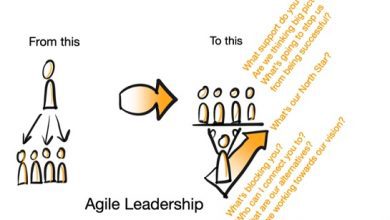Virtual dynamics in business its importance Advantages and Types
What are virtual dynamics?
In this article we will provide you the information about Virtual dynamics in business its importance Advantages and Types,
Virtual dynamics are activities that are developed to drive the continuous process of bringing together teams working remotely. These types of dynamics help teams establish deeper bonds by creating an office-like collaborative environment.
A virtual dynamic works when emotional connections between participants are facilitated. Activities that allow members of a team or organization to learn new things about each other and foster a type of bond that removes the limitations of physical distance.
Using strategic insights, virtual dynamics can help manage virtual teams through more fluid communication, while reinforcing a shared team identity .
These online team games and activities can also mitigate the challenges of a remote or distributed workforce, which may risk reducing employee engagement .
The dynamic virtual charged great relevance after the impact of the pandemic Covid-19, which boosted the work remote and distance education globally.
However, for many leaders of organizations, human resources and teachers it is still a challenge to implement successful virtual dynamics, so in this article we have prepared some of the most effective recommendations, tools and strategies to develop them effectively and without friction.
Why is creating virtual teams important?
The physical distance from work from home can quickly turn into emotional distance which, in turn, leads to isolation. And when your employees feel isolated, they won’t feel comfortable working with their teammates.
That’s why it’s important to create a comfortable environment that remote workers can trust.
Virtual dynamics creation efforts consist of several carefully designed strategies, games, and activities that are intended to bring more human interaction to virtual work.
This will help your team connect with others, making them feel like they really are part of a community.
Advantages of performing group dynamics online
Some of the advantages of conducting fun virtual dynamics among the members of an organization are:
1-They promote social interaction
When remote workers feel lonely, isolated, or unsupported, a virtual dynamic can remind them of all the amazing people behind them.
2-Increase motivation
When remote workers feel their work motivation diminishing, a virtual activity can help rekindle their passion by being in contact with enthusiastic coworkers.
3-Build trust
When employees working remotely crave more autonomy, a virtual activity can help them gain the trust of their bosses and colleagues.
Types of virtual group dynamics
Now that you know some of the benefits of virtual dynamics, we will present some of the types of virtual dynamics that you can implement to improve the organizational climate of your company:
1-Virtual dynamics to break the ice
Remote Team Icebreakers are activities you can do at the beginning of a virtual meeting to create quick and personal connections with your coworkers.
Virtual meetings can sometimes start with a few minutes of stiffness or discomfort. Therefore, exercises can be performed to overcome this discomfort and conduct effective remote meetings.
These can be classified into 3 levels according to the cohesion of the group:
-
“Easy” icebreakers
They are for groups with new members or with low levels of familiarity. At the green level, the response does not reveal much personal information and anyone should be able to respond quickly. Example: “do you like cats or dogs more?” or “Do you prefer coffee with or without sugar?”
-
Icebreakers “medium”
They are for groups that have been together for a considerable amount of time. Yellow questions reveal more personal ideas or opinions on relatively straightforward topics, although most people will be able to quickly answer these questions. Example: “What is your dream place to work?” or “Have you rated a place you visited with a single star?”
-
“Difficult” icebreakers
They are for groups that are already very comfortable with each other. This level requires vulnerability, but that vulnerability results in strong bonds between co-workers. Example: “What is your most popular tweet?” or “What is the last book you read?”
2-Activities to increase the cohesion of virtual teams
Virtual team building activities can consist of online games through a shared screen or unique offline experiences that can be used to create common ground for future online conversations.
Either through an online team game or an offline activity, these activities will help a team live experiences that they can share no matter how far away they are. Some examples are:
-
Virtual escape room
Virtual escape rooms exploded in 2020 as it was impossible to visit those in the real world due to the pandemic. In these, the teams have to go through a series of rooms, solve the puzzles in each one to find the answer to a mysterious murder and escape in time. It can be done through Zoom in an average time of 70 minutes.
-
Online personality test
This type of test allows you to understand the unique work styles of the people who are part of an organization. The number of participants is unlimited, lasts approximately 60 minutes and can be easily self-administered. For example, you can create a team building activity in which each person gets a profile to take various types of online personality tests and add them to a report. They can also fill out sections about their optimal job preferences and show how they work best.
-
Live virtual trivia
If your team likes trivia, they will love LivePolls . This platform allows you to create a session for the team and the host is in charge of guiding the live online trivia game.
Livepolls allow you to create fun and dynamic trivia with questions of any genre, from genre movies to topics related to the participants (local jokes, common work topics, etc).
-
Virtual visit to a city
A dynamic that can be very fun is a virtual visit to the city of a collaborator of the organization, who is in charge of visiting various points of interest and sharing it through a video call.
The tour can be recorded both with a cell phone and transmitted live if the collaborator’s internet connection allows it, or recorded and retransmitted later. You can find examples of these types of activities around the world on Airbnb Experiences.
-
Virtual treasure hunt
This is a really fun activity that gets organized quickly. When everyone is on Zoom’s call, launch the challenge of collecting a list of different common objects from around the house. Whoever gets to the webcam first and shows they have collected all the items wins.
Tools for managing virtual dynamics
Some tools that you can use to manage your virtual dynamics are:
1-Livepolls
Livepolls is a platform that allows you to create an online quiz , polls and trivia for free to interact and involve your organization live, showing the results of each question through a board that makes it a fun and very dynamic competition.
Using it is extremely easy. You just have to share a 4-digit code so that participants can enter the session and start the virtual dynamic. The tool is completely free, you just have to create a free QuestionPro account and you will have access to this tool.
2-Kahoot
Kahoot is an online educational tool for creating fun quizzes for students or running quick quizzes, where administrators can make a learning game or trivia quiz on any topic.
3-Bonusly
Bonusly is a virtual platform that helps companies make their recognition programs fun and organic.
4-Klaxon
Klaxoon is another tool that offers a comprehensive set of features to ensure that virtual meetings and other communication touchpoints engage employees and meet intended goals.
conclusion
As you can see, there are multiple ways and tools to perform successful virtual dynamics that help promote interaction between the members of an organization, so you only have to spend a little time preparing them and letting them flow properly.




